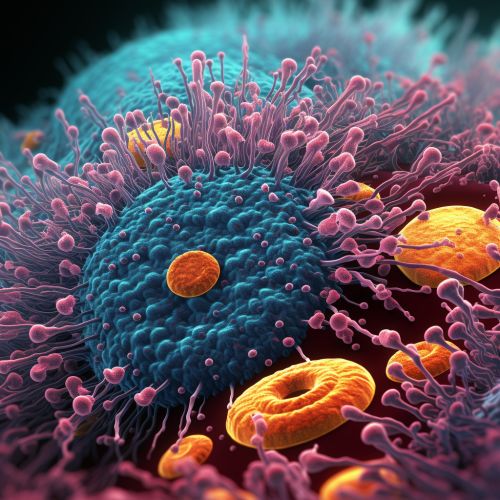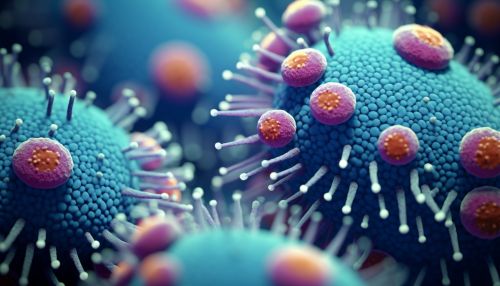Radiation-resistant organisms
Introduction
Radiation-resistant organisms, also known as radiotolerant organisms, are a group of extremophilic life forms that can survive and even thrive in environments with high levels of ionizing radiation. These organisms exhibit extraordinary resistance to the harmful effects of radiation, which can cause severe damage to the DNA and other cellular structures in most life forms.


Biology of Radiation Resistance
The biology of radiation resistance in these organisms is a subject of intense research. It involves a complex interplay of various cellular mechanisms, including DNA repair, protection of proteins, and metabolic adaptations.
DNA Repair
One of the key mechanisms that enable these organisms to withstand high levels of radiation is the ability to repair DNA damage. Ionizing radiation can cause a variety of DNA lesions, including single and double-strand breaks, base damages, and crosslinks. Radiotolerant organisms possess efficient DNA repair systems that can mend these lesions and restore the integrity of their genome.
For instance, Deinococcus radiodurans, one of the most radiation-resistant bacteria known, can repair hundreds of double-strand breaks in its DNA within a few hours of exposure to radiation. This remarkable ability is attributed to its unique DNA repair machinery, which includes the RecA protein, a key player in homologous recombination, a process that repairs double-strand breaks in DNA.
Protein Protection
In addition to DNA repair, protection of proteins from radiation-induced damage is another crucial aspect of radiation resistance. Ionizing radiation can generate reactive oxygen species (ROS), which can oxidize proteins and impair their function. Radiotolerant organisms have developed strategies to protect their proteins from ROS.
One such strategy is the synthesis of antioxidant molecules that can neutralize ROS. For example, Deinococcus radiodurans produces high levels of manganese complexes, which can scavenge ROS and protect proteins from oxidative damage.
Metabolic Adaptations
Radiotolerant organisms also exhibit metabolic adaptations that contribute to their radiation resistance. These adaptations allow them to survive in environments with high radiation levels, where the availability of nutrients and energy sources may be limited.
For instance, some radiotolerant organisms can undergo a state of metabolic dormancy, known as radiation dormancy, in response to radiation exposure. During this state, their metabolic activity is significantly reduced, which minimizes the production of ROS and helps to conserve energy.
Examples of Radiation-Resistant Organisms
There are several examples of radiation-resistant organisms, ranging from bacteria and archaea to fungi and animals.
Bacteria
Deinococcus radiodurans is perhaps the most famous example of a radiation-resistant bacterium. It can withstand doses of ionizing radiation that are lethal to most other organisms. Other examples of radiation-resistant bacteria include Thermococcus gammatolerans and Rubrobacter xylanophilus, which can survive in environments with high levels of gamma radiation.
Archaea
Several species of archaea, a group of single-celled organisms distinct from bacteria, are also known for their radiation resistance. For example, Pyrococcus furiosus and Halobacterium salinarum can tolerate high levels of ionizing radiation, thanks to their efficient DNA repair systems and protective mechanisms against protein oxidation.
Fungi
Certain species of fungi, such as Cryptococcus neoformans and Saccharomyces cerevisiae, are also resistant to radiation. These fungi possess robust DNA repair mechanisms and can produce antioxidant molecules that protect their proteins from radiation-induced oxidative damage.
Animals
Among animals, the tardigrade, or water bear, is known for its extraordinary resistance to radiation. Tardigrades can survive doses of ionizing radiation that are lethal to most other animals, thanks to their unique protective mechanisms, including DNA repair, protein protection, and metabolic adaptations.
Implications and Applications
The study of radiation-resistant organisms has important implications for various fields, including astrobiology, biotechnology, and medicine.
In astrobiology, these organisms provide insights into the possibility of life in extraterrestrial environments with high radiation levels, such as Mars or the moons of Jupiter. They also serve as models for studying the effects of long-term exposure to space radiation on living organisms.
In biotechnology, radiation-resistant organisms are used to develop new technologies for the cleanup of radioactive waste. For instance, Deinococcus radiodurans has been genetically engineered to absorb and store radioactive metals, providing a potential solution for the remediation of contaminated sites.
In medicine, the DNA repair mechanisms of radiation-resistant organisms are being studied to develop new treatments for diseases caused by DNA damage, such as cancer. Understanding how these organisms repair their DNA could lead to the development of drugs that enhance the DNA repair capacity of human cells, improving the effectiveness of radiation therapy for cancer.
